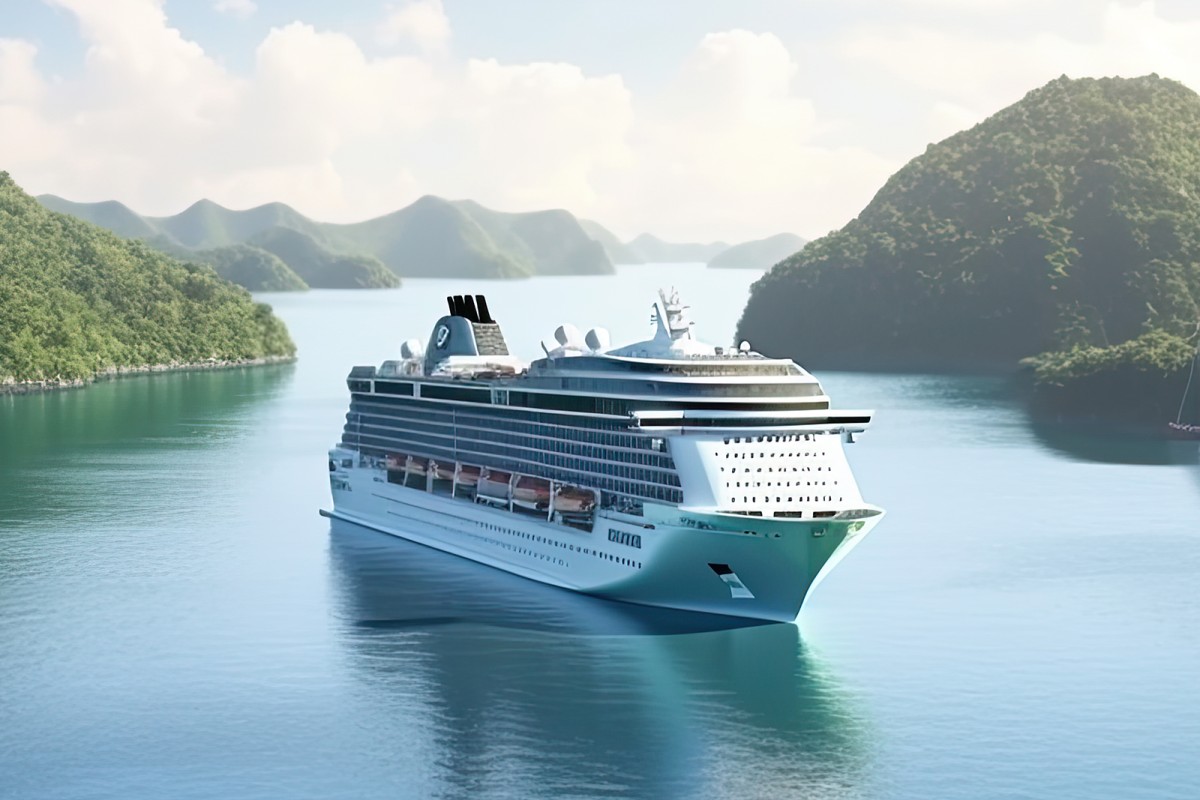Cruise Control: Antimicrobial Technology and Ship Hygiene

Cruise ships are a marvel of modern travel, offering passengers the opportunity to explore exotic locations while enjoying world-class amenities. However, with the allure of these floating cities comes a unique set of challenges, particularly when it comes to hygiene. A cruise ship may host thousands of passengers and crew, all in relatively close quarters, making the spread of bacteria an ever-present concern. Despite the rigorous cleaning protocols that are in place onboard, outbreaks have continued to plague the industry.
The confined spaces, shared facilities, and high volume of passengers moving through restaurants, elevators, cabins, and public restrooms make sanitation difficult. Passengers and crew alike can unwittingly contribute to contamination, as contact with high-touch surfaces like handrails, tables, and door handles provides a prime route for microbes to spread.
The Centers for Disease Control and Prevention (CDC) has logged 10 outbreaks on cruise ships in 2024 alone, most caused by norovirus[1]. These figures, while a decrease from 2023, serve as a reminder that traditional cleaning and disinfection methods are not enough.
The CDC’s Vessel Sanitation Program[2] aims to enforce high standards, but as recent reports indicate, even the most vigilant efforts can still lead to outbreaks[3]. While most cruise lines fully comply with sanitation regulations, the unpredictability of human behaviour and the persistence of pathogens create a situation where ‘clean’ doesn’t always mean hygienic.
This is where the use of antimicrobial additive technology could be a potential game-changer in the ongoing battle to maintain hygiene onboard cruise ships.
Antimicrobial additive technology can certainly add a lot of value in cruise ship applications. By incorporating antimicrobial additives directly into surfaces onboard, cruise lines can significantly reduce the risk of bacterial and viral survival. Silver-ion technologies[4], such as our Biomaster antimicrobial additives, have a well-documented ability to disrupt the metabolic processes of harmful microorganisms, effectively inhibiting their growth and survival on treated surfaces.
These additives are versatile and can be applied to a wide range of surfaces onboard a cruise ship, including but not limited to:
- Handrails and door handles: High-touch areas that are hotspots for contamination.
- Dining surfaces: Tables, trays, and utensils in restaurants and buffets.
- Textiles: Carpets, curtains, and bedding in guest cabins and common areas.
- Bathroom fixtures: Sinks, toilets, and shower facilities where germs thrive in moist environments.
The beauty of antimicrobial additives lies in their passive functionality. Once incorporated into a product, they compliment existing cleaning protocols whilst continuously working to inhibit microbial growth without the need for constant reapplication or maintenance. This provides a much-needed additional line of defence between deep cleans and reduces the opportunity for microbes to multiply.
Implementing antimicrobial additives into a cruise ship’s infrastructure offers numerous advantages, especially the potential to reduce the likelihood of outbreaks. By using antimicrobial additive technology in conjunction with existing cleaning protocols, ships can provide 24/7 product protection against microbial growth.
Key high-traffic areas like buffet counters, public restrooms, and fitness centres are naturally particularly vulnerable to contamination due to the frequency of use. While cleaning crews do their best to keep these areas spotless, antimicrobial-treated surfaces can offer an extra layer of protection during peak usage times. Additionally, antimicrobial additives can help to maintain a higher standard of hygiene in areas that might not receive as frequent attention from cleaning staff, such as less-trafficked hallways or crew quarters.
Passive hygiene through antimicrobial technology provides an ongoing solution that doesn’t rely on human intervention. In contrast to manual cleaning methods, which are only effective at the moment of cleaning, antimicrobial additives offer continuous protection for the lifetime of the surface it is incorporated to. This means that between cleaning sessions, surfaces are still working to reduce the presence of harmful microbes.
This kind of passive hygiene can the opportunity for the spread of pathogens, particularly during an outbreak. For instance, even if a surface were to become contaminated, the antimicrobial properties would inhibit the longevity and spread of the pathogen, reducing the chances of transmission.
In an era where passengers are more health-conscious than ever, incorporating antimicrobial technology into a cruise ship’s design could also offer a valuable marketing message for the cruise lines themselves. Travelers are increasingly seeking assurances that hygiene is being prioritised[5]. By using materials and surfaces that feature antimicrobial product protection, cruise lines can demonstrate their commitment to creating a cleaner, more hygienic environment for their guests.
The cruise industry is built on providing unforgettable experiences, but it must also rise to the challenge of improving hygiene. Antimicrobial additive technology offers a forward-thinking solution that can enhance traditional sanitation measures. By embracing and incorporating this technology, cruise lines can significantly reduce the microbial load within the environment, leading to a more enjoyable journey for everyone onboard.
While no single solution can eliminate poor hygiene, antimicrobial additive technology can offer a practical way to help enhance the onboard environment. As cruise lines continue to prioritise the passenger experience, antimicrobial technology should be a valuable tool in their efforts to improve and maintain hygiene standards at sea.

DOWNLOAD our Cruise Ship Antimicrobial Technology Information Sheet
References
- CDC, Common Health Concerns During Cruise Travel and What You Can Do to Prevent Illness, https://wwwnc.cdc.gov/travel/page/cruise-ship
- CDC, About Vessel Sanitation Program, https://www.cdc.gov/vessel-sanitation/about/index.html
- G Captain, CDC Shames The Nastiest, Dirtiest Cruise Ships, https://gcaptain.com/cdc-shames-the-nastiest-dirtiest-cruise-ships
- Addmaster, The Role of Silver in Antimicrobial Additive Technology, https://www.addmaster.co.uk/blog/the-role-of-silver-in-antimicrobial-additive-technology
- Daily Echo, P&O Cruises passengers speak out after Ventura norovirus outbreak, https://www.dailyecho.co.uk/news/24300039.p-o-cruises-passengers-speak-norovirus-outbreak
What Next?
🔗 Follow us on Social Media, here is our LINK TREE
✉️ See how our additive technology can benefit your business by CONTACTING US
🦠 Find out more about Biomaster Antimicrobial Technology HERE
🎥 Watch our video on how Biomaster works WATCH NOW
📰 Subscribe to our Newsletter - SUBSCRIBE
← Back to blog



